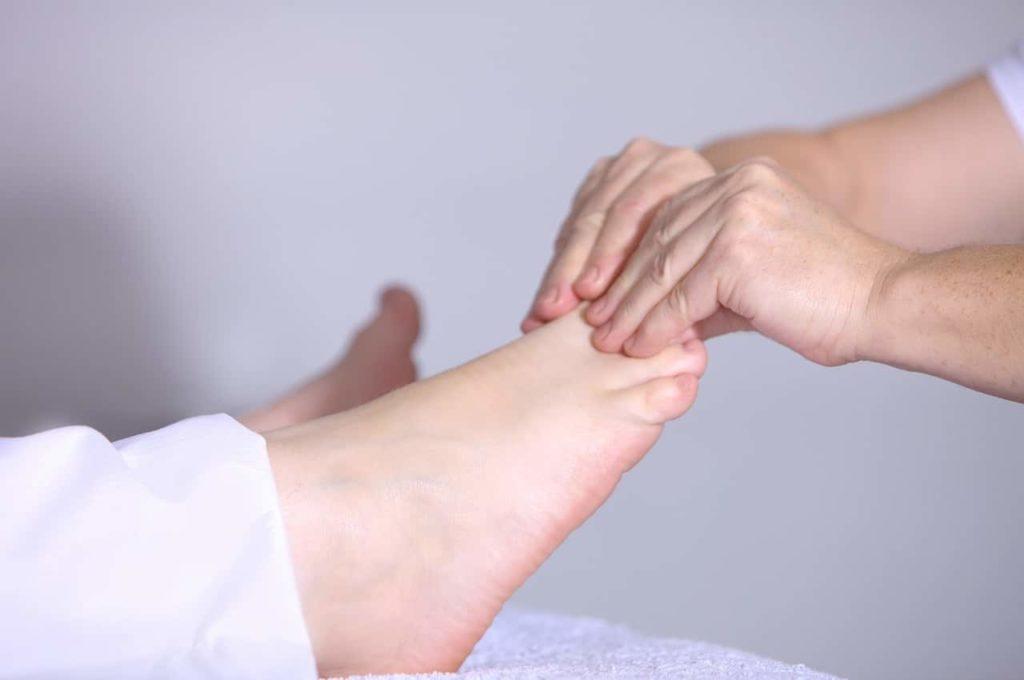Is the sensation of pins and needles constantly troubling your feet? Are you often awakened by a throbbing pain in your feet, especially at night? If your answer to these questions is a yes, then there's a possibility that you might be dealing with diabetic nerve pain in your feet, also known as diabetic neuropathy.
Diabetes is not just about managing blood sugar levels; it brings along an array of complications, with neuropathy being one of the most common ones. It's a silent assailant, causing damage that often becomes evident only after substantial irreversible harm has been done.
This blog post will delve into the nitty-gritty of this condition – its causes, its manifestation, and how to manage it effectively. So, let's take a journey into the intricate world of nerves and glucose metabolism to better understand the situation.
Diabetes: A Pandora’s Box of Metabolic Disorders
Often seen as a blood sugar problem, diabetes is much more than that. It’s a systemic metabolic disorder that wreaks havoc in the body in more ways than one. Characterised by either an insulin deficiency or insulin resistance, diabetes leads to an excess of glucose in our bloodstream.
Insulin, a crucial hormone, acts like a key, opening up the glucose gates of our body cells. But when insulin is deficient or the body becomes resistant to it, these gates don't open as they should. This results in an excess of glucose in the bloodstream and a dearth of it in the cells. The cells, especially nerve cells, start to starve even when there's plenty of glucose circulating in the blood.
What’s more, insulin also plays a significant role in the growth and repair of our body cells. So, an insulin deficiency causes disturbances in various growth mechanisms, further complicating the condition.
The excess of glucose in the blood alters its osmotic pressure, damaging the cells in several ways, including fluid loss. It also harms the inner layer of the blood vessels, impairing the small blood vessels that supply essential elements to the nerves.
Contrary to what most people believe, diabetes doesn’t only disrupt glucose metabolism. It affects the metabolism of all major energy-providing fuels, including lipids or fats, which are essential for maintaining nerve health. This condition is known as dyslipidaemia and is a common feature of diabetes.
Diabetic Neuropathy: A Domino Effect of Metabolic Changes
Unlike traumatic events that cause immediate damage to one or two nerves, the nerve damage in diabetes is more of a slow burn, affecting a widespread network of nerves over a period of time. This extensive damage makes neuropathy difficult to treat, but understanding the causes can offer insights into effective management strategies.
The nerve damage in diabetes, commonly known as diabetic neuropathy, usually affects nerves that are far from the heart and receive a lesser blood supply. It typically starts in the feet and slowly progresses to the lower legs. As the disease advances, these changes in nerve function can also be felt in the hands and arms, giving rise to the “socks and gloves” pattern of nerve pain common in diabetes.
Other issues, such as poor bone health, joint damage, and recurrent infections of the feet and lower extremities, often co-exist with diabetes and can further exacerbate nerve pain.
Unmasking Diabetic Nerve Pain in Feet
Diabetic neuropathy often manifests as numbness, tingling, and pain in the feet that is worse at rest or during the night. Some people may experience sensations like shooting pain, burning, throbbing, radiating, or tender pain. It's like an uninvited guest that shows up when a substantial amount of irreversible damage has already occurred.
Remember, these symptoms may initially be mild and can be easily dismissed as fatigue or aging. Regular check-ups are recommended for people with diabetes to detect and address neuropathy early.
Managing Diabetic Neuropathy: Is There a Way Out?
While diabetic neuropathy can be challenging to treat, it's not entirely unstoppable. With strict blood sugar control, a balanced diet, and lifestyle modifications, one can halt its progression and manage the symptoms effectively.
- Control Blood Sugar Levels: The primary preventive measure for diabetic neuropathy remains strict control of blood sugar levels. This can be achieved through medication, natural remedies, and lifestyle changes.
- Eat a Nutrient-rich Diet: To prevent nerve damage, consume a diet rich in vitamins, particularly B vitamins, and certain fatty acids like omega. These nutrients are essential for nerve health.
- Stay Active: Regular exercise not only helps control blood sugar levels but also improves overall nerve health. Choose a form of exercise you enjoy to ensure consistency.
- Try Alternative Therapies: Practices like foot massage, acupuncture, or reflexology can also help manage neuropathy pain.
- Opt for Natural Remedies: While medications can provide acute pain relief, long-term pain prevention is best achieved by using natural remedies.
Although living with diabetic neuropathy can be challenging, it's not insurmountable. With a proactive approach towards health and consistent efforts, you can manage this condition and lead a fulfilling life.
Do you wish to delve deeper into this topic? Learn more about what living with diabetic nerve pain in the feet feels like here.
FAQs about Diabetic Nerve Pain in Feet
Q1: What is diabetic neuropathy?
A1: Diabetic neuropathy is a type of nerve damage that can occur if you have diabetes. High blood sugar levels can damage nerves throughout your body, but diabetic neuropathy most often damages nerves in your legs and feet.
Q2: What are the symptoms of diabetic neuropathy in the feet?
A2: Symptoms can range from pain and numbness in your extremities to problems with your digestive system, urinary tract, blood vessels, and heart. For some people, these symptoms are mild; for others, diabetic neuropathy can be painful, disabling, and even fatal.
Q3: Can diabetic neuropathy be reversed?
A3: Diabetic neuropathy can't be reversed, but its progression can be slowed with strict control of blood sugar levels, a healthy diet, regular exercise, and the use of certain medications or natural remedies.
Q4: How can I manage diabetic neuropathy pain?
A4: Medications are often effective in managing acute pain caused by diabetic neuropathy. Additionally, natural remedies, physical therapies like massage and acupuncture, and maintaining a balanced diet and regular exercise regimen can also help alleviate the pain.
Q5: When should I see a doctor?
A5: If you have diabetes and are experiencing symptoms like numbness, tingling, pain, or weakness in your feet or hands, you should consult a healthcare professional. Early diagnosis and treatment can slow the progression of neuropathy and prevent further complications.
Conclusion
Diabetic nerve pain in the feet can significantly impact one's quality of life. However, with awareness, timely intervention, and a proactive approach to health, it's possible to manage this condition effectively. As we continue to learn more about diabetic neuropathy, it's crucial to share knowledge and resources that can help those living with this condition lead healthier and happier lives.
At Neuropathy Program, we strive to provide comprehensive information and support to help manage and mitigate diabetic neuropathy. Our aim is to be a beacon of hope for those navigating the stormy seas of diabetes and neuropathy, guiding them towards better health and wellness.
Remember, the journey of a thousand miles begins with a single step. Take that step today towards managing your health and reclaiming your life from diabetic neuropathy.
Stay tuned for more insightful articles on diabetes and neuropathy, and remember, you're not alone in this journey.







